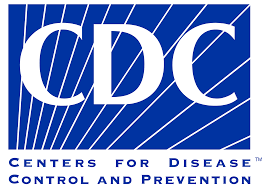CDC Releases Updated Sickle Cell Surveillance Summary
Analyses like the Sickle Cell Data Collection (SCDC) have played prominent roles in establishing new SCD clinics, educating health care providers, guiding new research initiatives, and developing state health care policies.

The US Centers for Disease Control and Prevention (CDC) shared the first comprehensive description of its collaborative efforts to establish, maintain, and expand sickle cell disease (SCD) surveillance in order to improve health outcomes for individuals living with the rare disease. The Sickle Cell Data Collection (SCDC) program involves data analyses from participating states that highlight unmet needs within the population.
While each state may have an independent approach to the program, standardized, rigorous methods were developed and uniformly implemented to ensure all participating states effectively reported the disease prevalence, health care needs and use, and deaths.
The inherited blood disorder is associated with various severe complications and a reduced life expectancy. It's estimated to affect 100,000 individuals in the US. These individuals often endure debilitating acute and chronic pain, anemia, infection, acute chest syndrome, stroke, progressive organ damage, inhibited cognitive function, and renal failure.
According to the report, a critical strategy to understanding the course and outcomes of sickle cell disease as well as the health care use, unmet care needs, and the gaps present in essential services, requires population-based public health surveillance of those affected by sickle cell disease.
Datasets Provided by State
California Results
- 9875 confirmed or probable SCD cases
- 6027 cases in the 2018 annual prevalence count
- 16%-71% of cases captured by each data source
- 27% of the SCD population was pediatric (0-18 years)
- 58% of the population were women
Georgia Results
- 14,777 confirmed or probable SCD cases
- 9141 cases in the 2018 annual prevalence count
- 17%-81% of cases captured by each data source
- 40% of the SCD population was pediatric (0-18 years)
- 57% of the population were women
The evaluation of contributing data sources from 2014-2018 indicated that data collected by individual sources isn't sufficient in providing an accurate statewide population prevalence and collaborative contribution is necessary.
In Georgia, 10% of babies born during 2004-2016 with SCD lived over an hour drive from the closest SCD specialty care option, with another 14% living within and hour drive to a periodic SCD specialty clinic only.
A similar assessment on Los Angeles County revealed that during 2016-2018 the majority of patients lived approzimately 15-60 miles from the nearest practicing hematologist with experience in SCD care.
Taking Action for Public Health
A key takeaway identified in the report was the need for more sickle cell disease specialty clinics in the participating states of California and Georgia. Analyses like the SCDC have played prominent roles in establishing new SCD clinics, educating health care providers, guiding new research initiatives, and developing state health care policies.
"Public health officials can use this report as a guiding framework to plan or implement surveillance programs for persons with SCD. Both data-related activities and the administrative considerations are crucial to the success of these programs," the report stated.
Gathering data for analyses can include data sources, patient identifiers to transfer and link information for a strenthened collective approach to improve sickle cell disease care. Additionally, figures on stakeholder engagement, costs and resources, and long-term sustainability also provide important insight.
The SCDC Method
Before SCDC was established in 2015, there were 2 short-term projects conducted: Registry and Surveillance System for Hemoglobinopathies (RuSH) and Public Health Research, Epidemiology, and Surveillance for Hemoglobinopathies (PHRESH). The data yielded from these initiatives covered 2004-2008 and 2012-2014, respectively.
This report consists of 14 years worth of data on the SCD populations in California and Gergia from 2004-2018. The 2 states also took part in RuSH and PHRESH which laid the foundation for development of SCDC methods and case definitions.
By utilizing comprehensive data linkages in state health systems, the SCDC operates as a population-based tracking system that enables the synthesization and dissemination of longitudinal data.